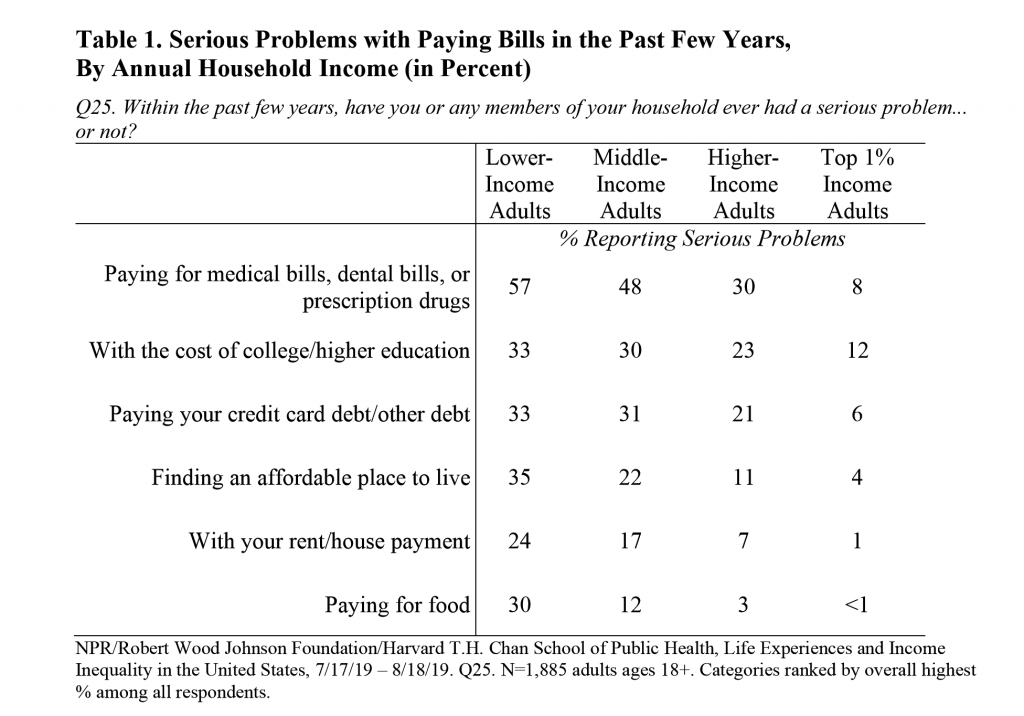 In America, earning lower or middle incomes is a risk factor for having trouble accessing health care and/or paying for it.
In America, earning lower or middle incomes is a risk factor for having trouble accessing health care and/or paying for it.
But most Americans, rich or not, believe that it’s unfair for wealthier people to get better health care, according to a January 2020 poll from NPR, the Robert Wood Johnson Foundation and Harvard Chan School of Public Health, Life Experiences and Income Equality in the United States.
The survey was conducted in July and August 2019 among 1,885 U.S. adults 18 or older.
Throughout the study, note the four annual household income categories gauged in the research:
- Top 1% = $500,000+
- Higher-income = $100,000-$499,999
- Middle-income = $35,000 – $99,999
- Lower-income = < $35,000.
The first chart shows that paying bills related to healthcare — for medical or dental services, or prescription drugs — were the hardest bills to pay in America across incomes except for the top 1% wage earners. For the richest Americans, paying for the cost of college ranked first among the most difficult bills to pay.
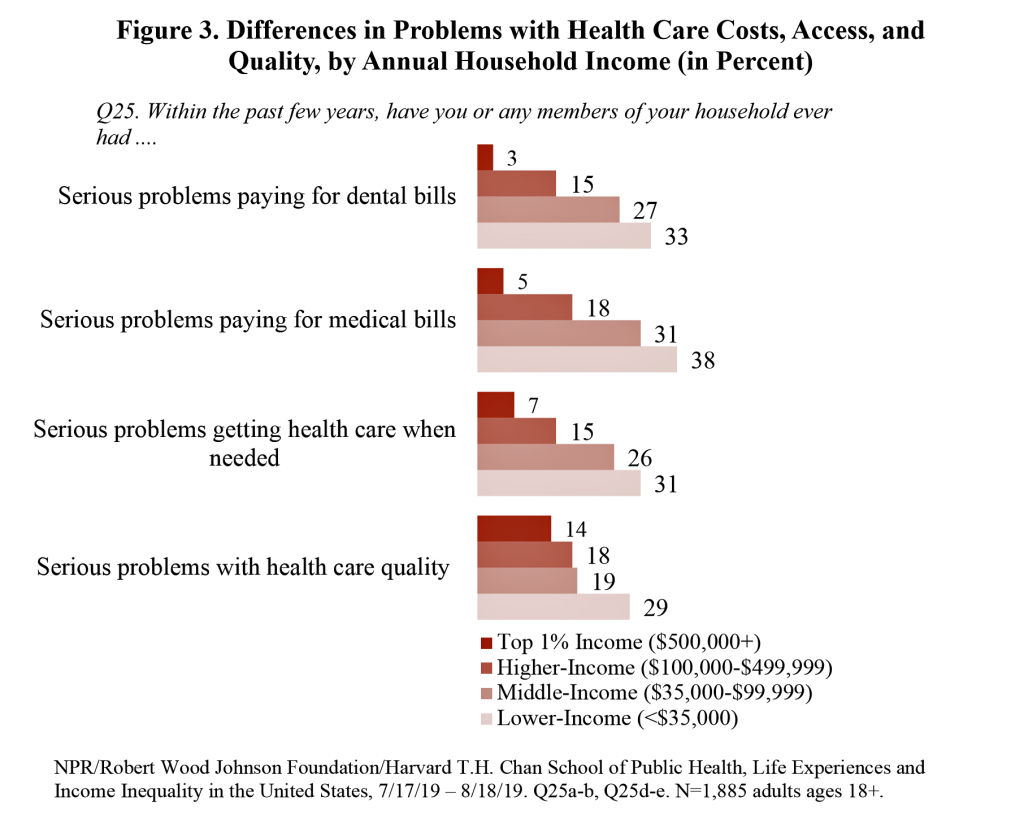 Lower- and middle-income Americans are more likely to experience problems in accessing care as well as receiving lower quality care, the second chart illustrates. Access is the ability to get care when needed, a challenge for over one-fourth of lower- and mid-income earners.
Lower- and middle-income Americans are more likely to experience problems in accessing care as well as receiving lower quality care, the second chart illustrates. Access is the ability to get care when needed, a challenge for over one-fourth of lower- and mid-income earners.
Prescription drug costs are also challenging for people with drug coverage: 1 in 2 Rx-covered Americans earning under $100.000 said they were denied coverage for drugs in the past year and didn’t end up filling their prescription.
Furthermore, millions of Americans did not fill prescriptions due to cost in the past year, broken into the following self-rationing patterns which fall by income level:
- Lower-income, 30%
- Middle-income, 23%
- Higher-income, 16%
- Top 1% income, 10%.
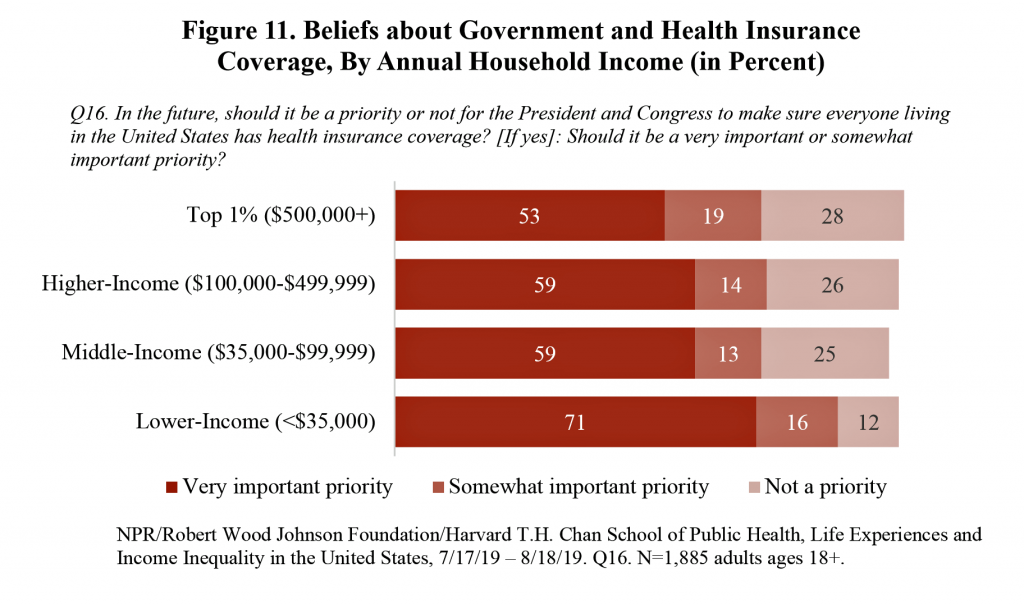 Even a majority of the highest-income Americans believe the President and Congress should ensure everyone living in the U.S. has health insurance coverage, the third chart tells us. It’s a “very important priority” to 53% of the richest 1% in America, and a “somewhat important priority” to another 19% of the wealthiest. Note that the same proportions of higher-income and middle-income Americans call out a high priority for the Federal government to make sure all Americans have health insurance.
Even a majority of the highest-income Americans believe the President and Congress should ensure everyone living in the U.S. has health insurance coverage, the third chart tells us. It’s a “very important priority” to 53% of the richest 1% in America, and a “somewhat important priority” to another 19% of the wealthiest. Note that the same proportions of higher-income and middle-income Americans call out a high priority for the Federal government to make sure all Americans have health insurance.
Over 7 in 10 people across all incomes say those with higher incomes can get better health care than people with lower incomes — agreed by 72% of the 1%’ers.
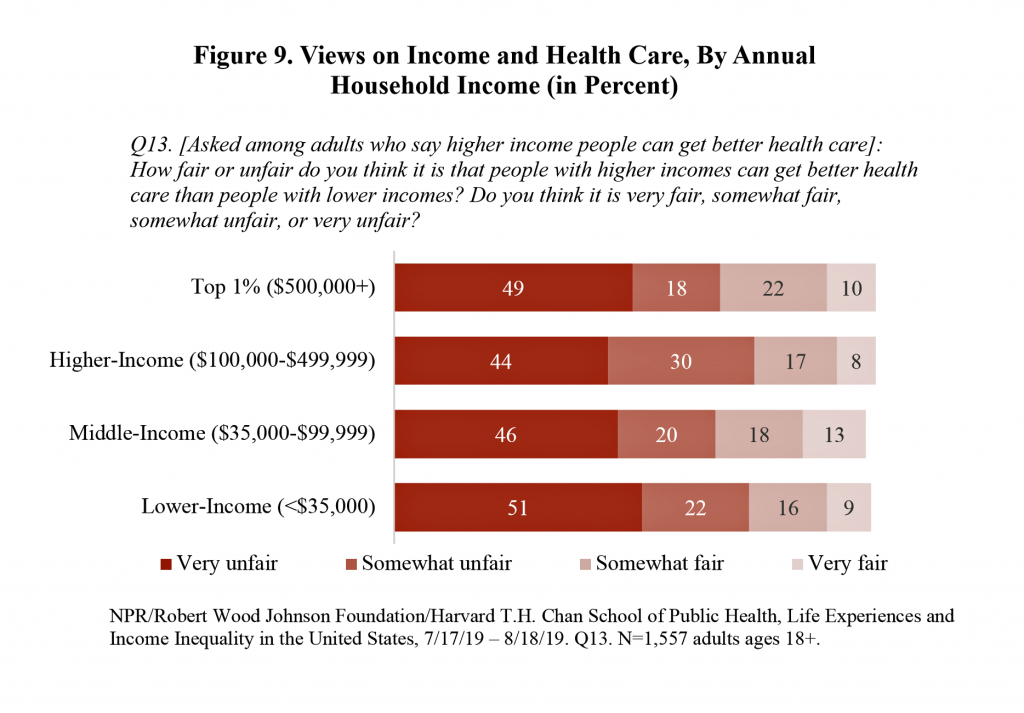 Health Populi’s Hot Points: Over the past twenty years in the U.S., there has been no improvement in Americans’ access to physician or preventive services, a study published this week in JAMA Internal Medicine attests.
Health Populi’s Hot Points: Over the past twenty years in the U.S., there has been no improvement in Americans’ access to physician or preventive services, a study published this week in JAMA Internal Medicine attests.
In Trends in Unmet Need for Physician and Preventive Services in the United States, 1998-2017, researchers analyzed twenty years’ worth of data from the CDC Behavioral Risk Factor Surveillance System. The study design covered people aged 18 to 64 years, excluding older people assumed to be covered by Medicare.
The bottom-line of the study was that despite some improvement in insurance coverage over the 20-year period, millions of Americans still faced barriers to care — both physician services and prevention (the latter a key focus of the Affordable Care Act).
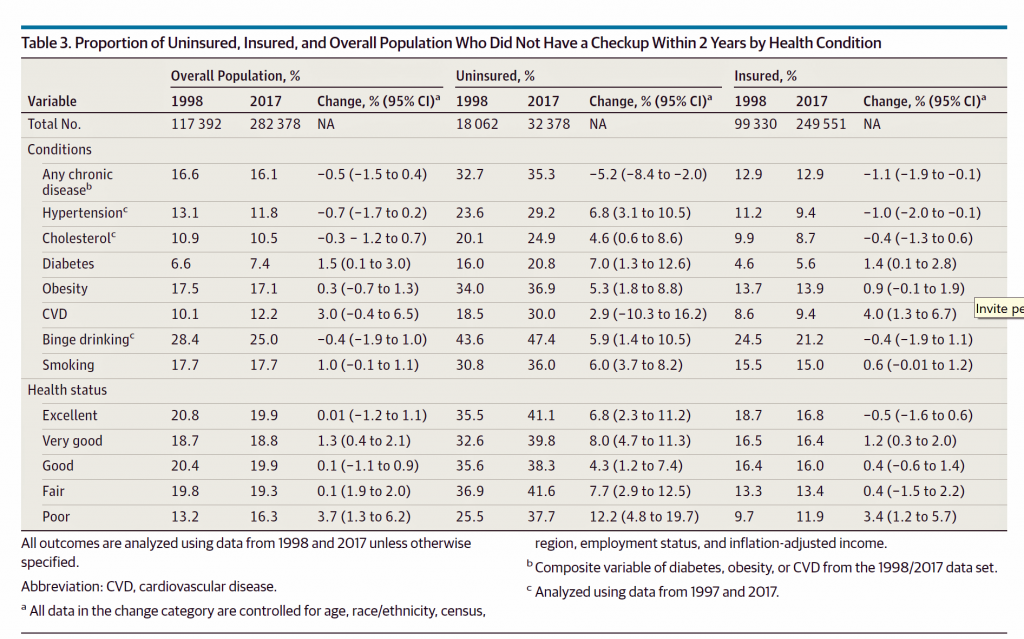 This last chart comes from the JAMA study and organizes the data for the overall population studied (again, people 18-64 years of age), and differences between those with insurance versus those without.
This last chart comes from the JAMA study and organizes the data for the overall population studied (again, people 18-64 years of age), and differences between those with insurance versus those without.
For people dealing with any chronic disease, 16.6% of patients did not have a checkup within 2 years for their condition. But the difference that insurance made was huge: 35.3% of people with a condition who were uninsured did not have a checkup in the past two years, compared with 12.9% of the insured population.
That translates to a 3x greater risk for not seeking care for a chronic condition among the uninsured versus the insured.
You can see differences by particular chronic conditions comparing the percent of people who did not seek a checkup for 2 years: for example,
- For people with diabetes, 20.8% of the uninsured versus 5.6% of the insured
- For people with cardiovascular disease (CVD), 30.0% of the uninsured versus 9.4% of the insured
- For people who binge drink, 47.4% of the uninsured compared with 21% of those insured.
The prevalence rate of chronic conditions and poor lifestyle choices span political parties. When it comes to income, that’s a bit more complicated because socioeconomic status underpins the social determinants of health that influence our health status more than access to medical services do. Holding both those thoughts and evidence bases in our minds at the same time is required to address health inequities in America that, clearly, most citizens well understand based on the NPR-Harvard-RWJF poll.


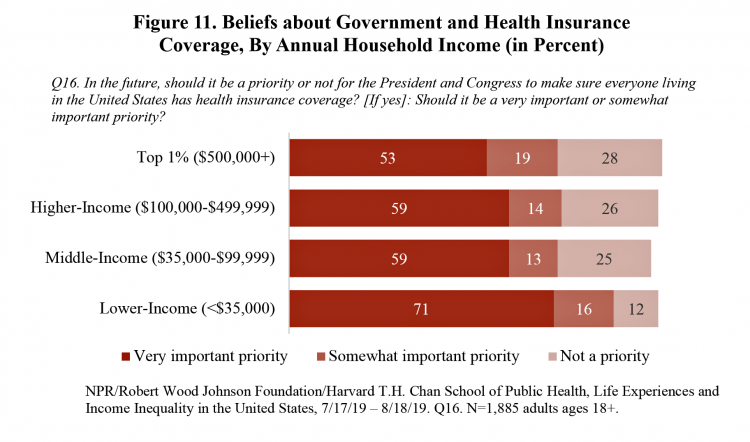


 I'm in amazing company here with other #digitalhealth innovators, thinkers and doers. Thank you to Cristian Cortez Fernandez and Zallud for this recognition; I'm grateful.
I'm in amazing company here with other #digitalhealth innovators, thinkers and doers. Thank you to Cristian Cortez Fernandez and Zallud for this recognition; I'm grateful. Jane was named as a member of the AHIP 2024 Advisory Board, joining some valued colleagues to prepare for the challenges and opportunities facing health plans, systems, and other industry stakeholders.
Jane was named as a member of the AHIP 2024 Advisory Board, joining some valued colleagues to prepare for the challenges and opportunities facing health plans, systems, and other industry stakeholders.  Join Jane at AHIP's annual meeting in Las Vegas: I'll be speaking, moderating a panel, and providing thought leadership on health consumers and bolstering equity, empowerment, and self-care.
Join Jane at AHIP's annual meeting in Las Vegas: I'll be speaking, moderating a panel, and providing thought leadership on health consumers and bolstering equity, empowerment, and self-care.